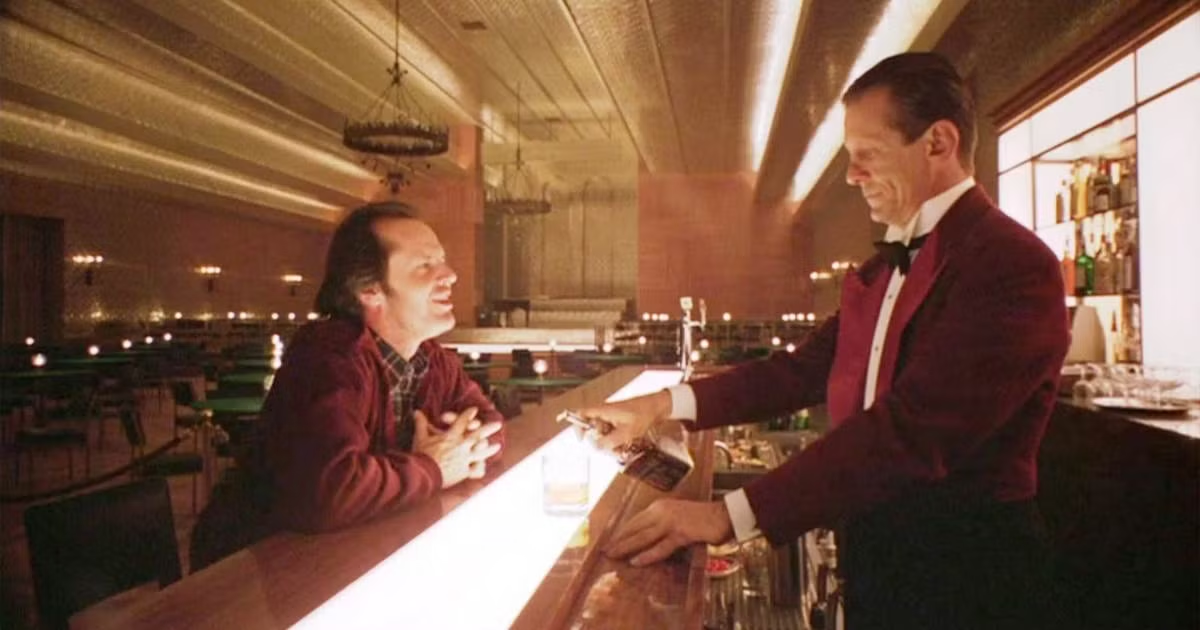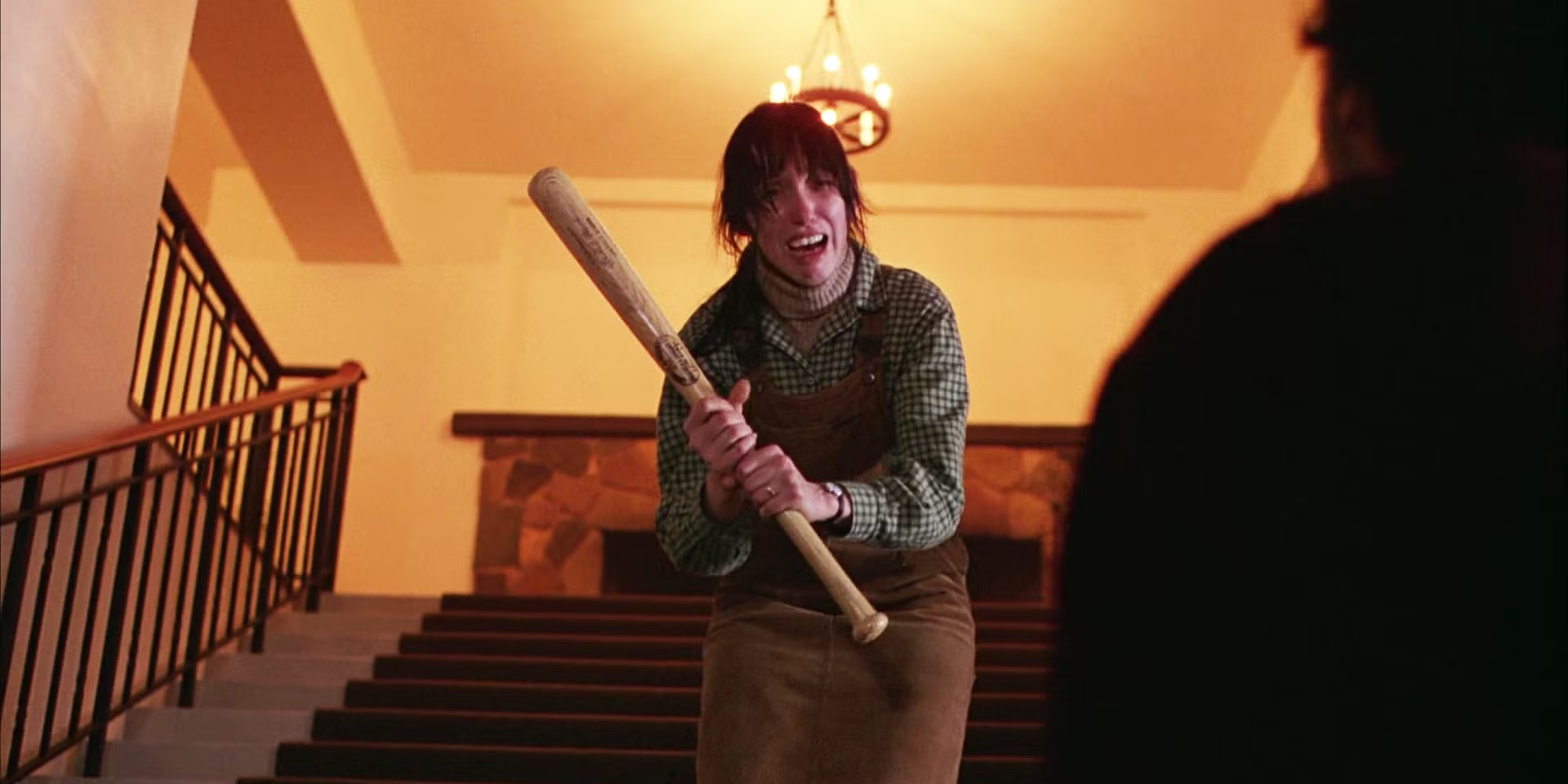The Shining | Directed by Stanley Kubrick // Starring Jack Nicholson, Shelley Duvall, and Danny Lloyd
Set the mood with some music!
Summary (Spoiler-free): The Shining (1980), directed by Stanley Kubrick and loosely based on Stephen King’s novel, is a psychological horror masterpiece that explores the slow unraveling of a family isolated in a remote, snowbound hotel. What begins as a quiet winter caretaker job soon descends into paranoia, dread, and madness.
This may sound strange — especially considering I now rank The Shining as the greatest film ever made — but the first time I saw it, I didn’t even like it. I had just read Stephen King’s novel and was expecting a faithful adaptation. What I got felt cold, distant, and completely detached from the book I loved. I dismissed it as a bad adaptation.
But I was a teenager then, with little to no media literacy. I wanted to be entertained, not challenged. I wasn't thinking about symbolism, visual language, or subtext. I just wanted scares and blood and something closer to The Ring or Saw. What I didn’t realize at the time was that I had just watched a film that would fundamentally change how I understand cinema.

Stanley Kubrick, as cliché as it may be to say, really was one of the greatest directors to ever live. His vision was obsessive, precise, and often punishing—both for himself and his actors. We’ve all heard the horror stories about the making of The Shining: endless takes, emotional breakdowns, production delays. And while those methods are ethically murky at best, the final result is something transcendent.
Kubrick’s command of tone and visual storytelling is unmatched here. He knows when to cut, when to linger, when to move with a character, and when to stay completely still. There aren’t many jump scares, but the dread is constant—and often unexplainable. It’s not about what’s happening in the frame as much as how it’s happening. The unease creeps in slowly, and by the time you notice it, you’re already consumed.
As an adaptation, yes — it deviates significantly from King’s novel. But that’s because Kubrick wasn’t trying to make a faithful translation; he was making a film with its own message. The Shining becomes a layered allegory about addiction, mental illness, isolation, obsession, and the decay of family. It’s a film that takes a haunted house premise and uses it as a stage for unraveling the human psyche.
There’s a deliberate spatial unreliability throughout — the infamous impossible window, the hotel layout that doesn’t make sense, chairs that disappear between cuts, and hallways that shouldn’t exist. People argue whether these are continuity errors, but with Kubrick, nothing is accidental. These visual “mistakes” are intentional, designed to subtly disorient the viewer and undermine our trust in space and time.
Jack Nicholson gives what I believe is his definitive performance. His transformation from everyday man to unhinged monster is terrifying precisely because it’s so gradual and at times, almost logical. You can feel the rage, the emptiness, the addiction to power and control.
Shelley Duvall, unfairly ridiculed at the time (and even nominated for a Razzie), gives a performance that has aged beautifully. Her wide-eyed terror, her breathless panic, her shaking hands — it’s all too real, which may have been why people rejected it. She doesn’t give a stylized or “cool” horror performance. She plays a woman coming apart at the seams. And it’s devastating.
Danny Lloyd, as young Danny Torrance, is wonderfully wooden in exactly the way the role demands — his quiet detachment makes him feel otherworldly, almost ghost-like himself.
The editing amplifies the film’s sense of wrongness. Scenes fade into one another with uncanny timing. Cuts linger too long — or arrive a second too soon. It feels off, because it is off. The score is haunting — dissonant, abrasive, unsettling. The violin wails, the pounding percussion, the low mechanical hums that seem to vibrate in your bones… it all works to sustain a level of tension that never fully releases.
And then there are the conspiracy theories. Some are compelling: the Native American genocide symbolism is backed by visual cues and thematics that hold up under scrutiny. Others, like Kubrick faking the moon landing and leaving clues in the film, are harder to buy, but even those show how layered and dense the film is. Few movies spark this much analysis decades later.

The Shining is more than a movie. It’s a meticulously crafted descent into madness that reshaped my understanding of what film can be. Every frame is deliberate. Every sound, every cut, every prop is loaded with meaning. There’s no fluff — just dense, deliberate, mind-bending storytelling. It’s not built for everyone. It’s not designed to comfort or even to entertain in the traditional sense. It’s meant to unsettle, to linger, to haunt.
Kubrick didn’t just make a horror film. He made a film that weaponizes silence, space, rhythm, and ambiguity to create psychological terror that stays with you long after the credits roll. It’s not a film you just watch — it’s one you process, wrestle with, and ultimately surrender to.
I understand why people might find it cold or confusing. But to me, The Shining is a beacon for what cinema should be: layered, obsessive, demanding, and unforgettable. It's a film that invites endless interpretations, conspiracy theories, debates, and rewatches. And if a movie can still provoke that level of conversation over 40 years later, that’s not just a great film — it’s a landmark of the art form.
It took me years to come around, but I’m glad I did. Because once I let go of what I thought the film should be, I saw it for what it truly is: the most perfectly constructed horror film — and the greatest film — ever made.